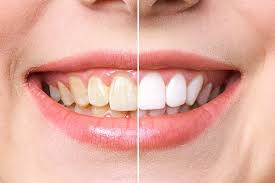
Permanent Teeth Whitening: Ultimate Guide to a Brighter Smile
Introduction
A bright, white smile is often associated with health, youth, and beauty. It’s no surprise that teeth whitening is one of the most popular cosmetic dental procedures today. While many seek temporary solutions like over-the-counter whitening strips or professional bleaching treatments, there is growing interest in more permanent teeth whitening options. This comprehensive guide will explore everything you need to know about permanent teeth whitening, including available methods, benefits, risks, costs, and maintenance tips.
Understanding Permanent Teeth Whitening
What is Permanent Teeth Whitening?
Permanent teeth whitening refers to procedures or treatments designed to provide long-lasting or even lifelong whitening results. Unlike temporary whitening solutions that may require frequent reapplication, permanent methods aim to deliver a more enduring white smile.
Common Causes of Teeth Discoloration
Before diving into the various whitening options, it’s essential to understand what causes teeth to become discolored. Common factors include:
- Diet: Foods and beverages like coffee, tea, red wine, and berries can stain teeth.
- Tobacco Use: Smoking or chewing tobacco can cause yellowing.
- Poor Dental Hygiene: Inadequate brushing and flossing can lead to plaque buildup and discoloration.
- Medications: Certain medications, such as tetracycline antibiotics, can cause teeth discoloration.
- Aging: As we age, the enamel on our teeth wears down, revealing the yellowish dentin beneath.
- Genetics: Some people naturally have whiter or more yellow teeth due to genetic factors.
The Science Behind Teeth Whitening
Teeth whitening typically involves the use of bleaching agents like hydrogen peroxide or carbamide peroxide. These agents penetrate the enamel and break down stains, making the teeth appear whiter. Permanent teeth whitening methods often involve more advanced techniques to ensure lasting results.
Methods of Permanent Teeth Whitening
Professional In-Office Whitening
One of the most effective methods of teeth whitening is professional in-office treatment. Dentists use high-concentration bleaching agents and special lights or lasers to accelerate the whitening process. Here’s a closer look:
- Procedure: The dentist applies a protective gel to the gums and a whitening agent to the teeth. A light or laser is then used to enhance the whitening effect.
- Results: Immediate and dramatic results can often be achieved in just one visit.
- Duration: With proper care, results can last several years.
Dental Veneers
Dental veneers are thin shells of porcelain or composite resin that are bonded to the front of the teeth. They are an excellent option for those looking for a permanent whitening solution and can also correct other dental issues like gaps or misalignment.
- Procedure: The dentist removes a small amount of enamel from the teeth, takes impressions, and then custom-makes veneers to fit. These are then bonded to the teeth.
- Results: Veneers provide a permanently white and flawless appearance.
- Duration: Veneers can last 10-20 years with proper care.
Dental Crowns
Dental crowns are caps that cover the entire tooth. They are used to restore teeth that are severely discolored, damaged, or decayed.
- Procedure: The dentist removes part of the tooth structure, takes an impression, and places a temporary crown. A permanent crown is custom-made and bonded to the tooth.
- Results: Crowns can provide a permanently white and natural look.
- Duration: Crowns can last 10-15 years or longer with good oral hygiene.
Composite Bonding
Composite bonding involves applying a tooth-colored resin to the teeth, which is then shaped and polished to achieve the desired appearance. It can be used to address discoloration as well as chips or gaps.
- Procedure: The dentist applies a conditioning liquid, then the composite resin, which is hardened with a special light.
- Results: Composite bonding can provide a white and natural-looking smile.
- Duration: Results can last several years, though the material may stain over time.
Enamel Microabrasion
Enamel microabrasion is a procedure that removes superficial stains and discoloration by gently abrading the outer layer of enamel. It is often combined with other whitening treatments for enhanced results.
- Procedure: The dentist applies a mixture of hydrochloric acid and pumice to the teeth and gently rubs it in.
- Results: Immediate improvement in the appearance of surface stains.
- Duration: Results are permanent for the areas treated, but further staining can occur if not maintained properly.
Benefits of Permanent Teeth Whitening
Enhanced Aesthetic Appeal
A white, bright smile can significantly enhance your overall appearance, making you look healthier and more attractive.
Boost in Confidence
Having a beautiful smile can boost your self-esteem and confidence, impacting both your personal and professional life.
Long-Term Cost Savings
While permanent whitening methods may have higher upfront costs, they can be more cost-effective in the long run compared to repeated use of temporary solutions.
Durability and Low Maintenance
Permanent whitening solutions like veneers and crowns are durable and require minimal maintenance compared to frequent bleaching treatments.
Risks and Considerations
Potential Sensitivity
Some permanent whitening procedures can cause temporary tooth sensitivity. Discussing this with your dentist can help manage and mitigate this risk.
Enamel Damage
Improper application or overuse of certain whitening treatments can damage the enamel. Professional guidance is crucial.
Cost
Permanent teeth whitening methods can be expensive. It’s essential to weigh the benefits against the costs and explore financing options if needed.
Not Suitable for All
Certain conditions, such as gum disease or severe tooth decay, may make some whitening procedures unsuitable. A thorough dental evaluation is necessary.
Maintenance Tips for a Long-Lasting White Smile
Good Oral Hygiene
- Brush and Floss Regularly: Maintain a routine of brushing at least twice a day and flossing daily.
- Use Whitening Toothpaste: Whitening toothpaste can help maintain the brightness of your teeth.
Regular Dental Check-Ups
Regular visits to the dentist for cleanings and check-ups are essential to maintain oral health and the longevity of whitening results.
Avoid Staining Foods and Beverages
Limiting the intake of staining foods and beverages like coffee, tea, red wine, and dark berries can help maintain your white smile.
Quit Smoking
Smoking not only discolors teeth but also poses significant health risks. Quitting smoking can improve your overall health and the appearance of your teeth.
Touch-Up Treatments
Depending on the whitening method used, occasional touch-up treatments may be necessary to maintain the results.
Costs of Permanent Teeth Whitening
Professional In-Office Whitening
Professional in-office whitening treatments can range from $500 to $1,000 per session, depending on the dentist and the specific treatment used.
Dental Veneers
The cost of dental veneers can vary widely, typically ranging from $500 to $2,500 per tooth. The material (porcelain or composite resin) and the dentist’s expertise influence the price.
Dental Crowns
Dental crowns can cost between $800 and $1,500 per tooth, depending on the material used and the complexity of the procedure.
Composite Bonding
Composite bonding is generally less expensive, with costs ranging from $100 to $400 per tooth.
Enamel Microabrasion
The cost of enamel microabrasion can range from $50 to $300 per tooth, depending on the extent of the treatment needed.
Choosing the Right Permanent Whitening Method
Consultation with a Dental Professional
It’s crucial to consult with a dental professional to determine the best whitening method for your specific needs and circumstances. Factors to consider include:
- Current Oral Health: The presence of cavities, gum disease, or other dental issues may influence the choice of treatment.
- Desired Results: Different methods offer varying levels of whiteness and longevity.
- Budget: Permanent whitening methods vary in cost, so it’s important to choose one that fits your budget.
Personal Preferences
Consider your lifestyle, preferences, and how much time you’re willing to invest in maintenance when choosing a permanent teeth whitening method.





